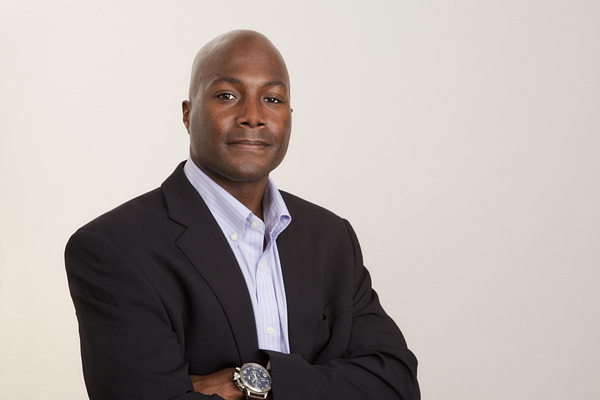UD’s Epps invited participant at EU-US Frontiers in Engineering Symposium
11:17 a.m., Oct. 16, 2013–The University of Delaware’s Thomas H. Epps, III, is one of 30 early-career engineers nationwide invited to attend the 2013 European Union-United States Frontiers of Engineering Symposium to be held Nov. 21-23 in Chantilly, France.
Organized by the National Academy of Engineering and the European Council of Applied Sciences and Engineering, the symposium will focus on nanosensors, big data, the future of transportation, and wireless broadband. A total of 60 participants, 30 from the United States and 30 from Europe, will discuss their leading-edge research.
“It is an opportunity to share my research and to establish a professional network with emerging engineers, scientists and others across the globe conducting impactful research in fields outside of chemical engineering,” said Epps, the Thomas and Kipp Gutshall Chair of Chemical and Biomolecular Engineering.
A chemical engineer by training, Epps’ UD research focuses on designing, building and characterizing new polymers (long chain molecules containing many chemically bonded units). Currently, his group is studying polymers that self-assemble into periodic and nanometer-scale structures for applications including conducting membranes, surface templates and drug delivery carriers.
Potential uses for these systems include alternative energy materials such as lithium battery and fuel cell membranes; organic solar cells; templates for hard disc drives, integrated circuits and other electronics components; and as drug and nucleic acid delivery carriers.
“One advantage of using polymers as key components in electronics devices is the polymer’s flexibility, weight and ability to be processed, all of which can lead to flexible displays for cell phones, computers and other data storage devices that increase usability, accessibility and performance,” he said.
In health care, Epps is interested in stimuli responsive and targeted drug delivery; which can be facilitated by nanoscale containers created from block copolymers.
“We are designing systems that will encapsulate a drug while it travels to a targeted area within the body, and then release the drug at that desired location, such as in a cancer cell or tumor tissue. Even deeper, we’re looking at how to get the drug to specific locations within a target cell so that it can better do its job,” Epps said.
The Epps group also is investigating the importance of preparation procedures in drug nanocarrier creation, as nanoparticle processing can have significant effects on formulation shelf life and drug delivery efficiency.
“There are many cases in the literature where results don’t agree, and this can have a lot to do with how the nanoparticles were formed and how they evolve over time. These factors are things we can begin to probe,” he said, “It is one of the areas that we are very excited about.”
Epps also attended the Frontiers of Engineering symposium in 2008. Other UD chemical and biomolecular engineering faculty who have participated in FOE symposia include Millicent Sullivan, associate professor, in 2010; Eric Furst, professor, in 2009; and Eric Kaler, former professor, department chair and dean, in 1999.
About the professor
Thomas H. Epps, III, joined UD in 2006 as an assistant professor and was promoted to associate professor with tenure in 2012. He earned his bachelor’s and master’s degrees from the Massachusetts Institute of Technology (MIT) and a doctoral degree from the University of Minnesota. Epps completed postdoctoral studies as a National Research Council Postdoctoral Fellow in the Polymers Division at the National Institute of Standards and Technology in Gaithersburg, Md.
He received the Presidential Early Career Award for Scientists and Engineers (PECASE) from President Barack Obama in 2009, the highest honor conferred by the United States government on young professionals in the early stages of their independent research careers. Also a DuPont Young Professor, Epps was the Martin Luther King Jr. Visiting Professor in the Chemistry Department at MIT from 2012 to 2013.
Article by Karen B. Roberts
Photo by Ambre Alexander

